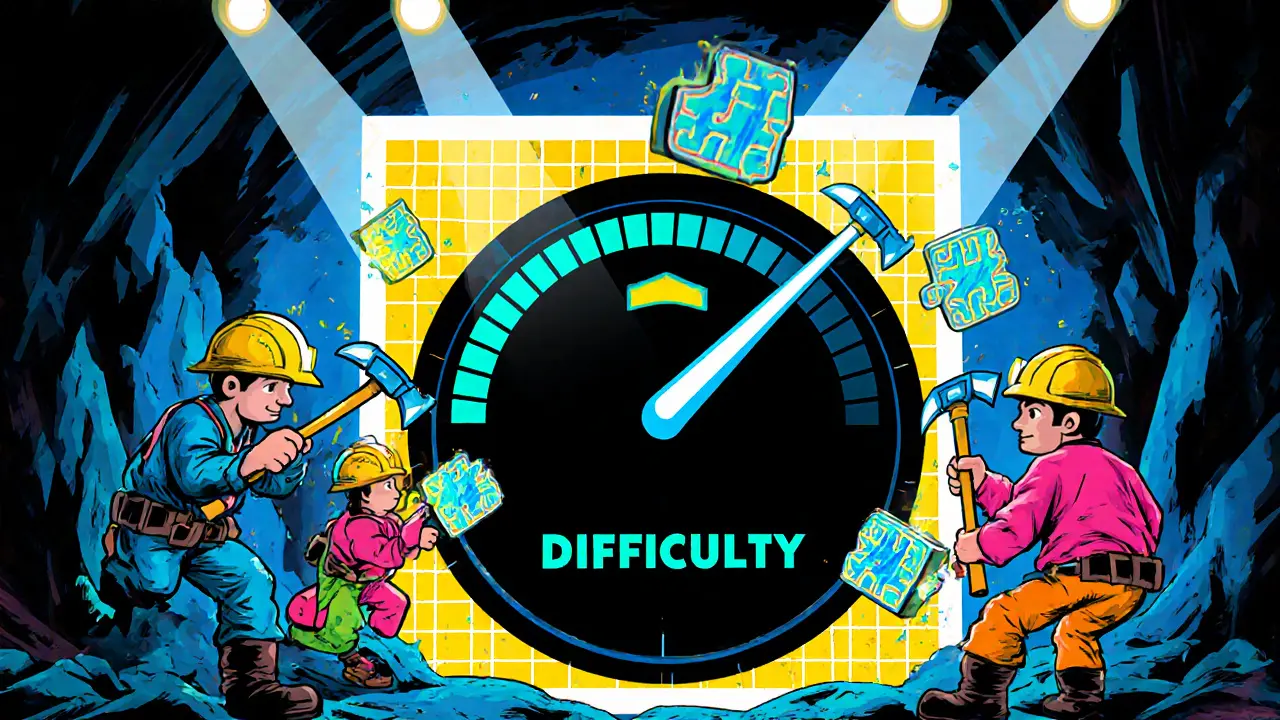Cryptocurrency Mining: How It Works, What Affects Profitability, and Where to Start
When diving into Cryptocurrency Mining, the process of using computer power to solve cryptographic puzzles and secure blockchain networks. Also known as crypto mining, it fuels most coins that run on Proof of Work. In simple terms, miners compete to find a hash that meets the network’s target, and the first to succeed earns the block reward. This basic loop connects several key ideas you’ll see across the guides below, such as Mining Difficulty, a dynamic metric that adjusts how hard it is to find a valid block hash and Mining Pools, collectives where miners share hash power and split rewards. Understanding how these pieces fit together is the first step toward making informed decisions about hardware, software, and where to direct your hash rate.
Why Mining Difficulty Matters
Mining Difficulty isn’t just a number; it’s the network’s way of keeping block times stable. As more hash power joins Bitcoin or any other Proof of Work coin, the difficulty climbs, ensuring that blocks still appear roughly every ten minutes (or the set interval for that chain). This self‑adjusting system protects the blockchain’s security because an attacker would need to out‑hash the entire network to rewrite history. For miners, difficulty directly influences profitability: higher difficulty means fewer blocks per hash unit, so you need either more efficient hardware or cheaper electricity to stay in the black. The articles in this collection break down how difficulty is calculated, how often it readjusts, and what a sudden spike could mean for your daily earnings.
Beyond Bitcoin, many altcoins use the same principle but with different target times. Some newer projects even tweak the algorithm to make difficulty adjustments smoother, which can affect how quickly your rig becomes profitable after a hardware upgrade. By comparing difficulty curves across major coins, you can spot opportunities where a lower difficulty relative to hash rate translates into higher returns. That’s why our “Mining Difficulty Explained” guide includes a quick comparison chart for Bitcoin, Ethereum Classic, and Litecoin.
Switching gears, the way you organize your hash power—whether you mine solo or join a pool—has a huge impact on cash flow. Solo mining offers the thrill of a full block reward but comes with high variance; you might wait weeks for a single payout. Mining Pools, on the other hand, provide steady, smaller payouts by spreading the reward among many participants. Our “Switching Mining Pools” guide walks you through evaluating pool fees, payout structures, and geographic latency, then shows how to set up failover configurations so you never miss a share if your primary pool goes down. These practical steps help you keep earnings consistent while you experiment with different pools for the best net profit.
Of course, you can’t ignore the hardware side. Hash Rate, the measure of how many hashes your equipment can compute per second, is the engine behind every mining operation. Modern ASICs deliver terahashes at a fraction of the power used by older GPU rigs, but they also require careful cooling and a reliable power supply. The guides reference real‑world power consumption numbers, so you can plug them into a simple ROI calculator before buying. Pairing the right hardware with the optimal pool and an awareness of difficulty trends gives you a balanced strategy that works whether you’re a hobbyist or an aspiring professional.
All these elements—Proof of Work, difficulty adjustments, pool dynamics, and hash rate—interlock to shape the mining ecosystem. Below you’ll find in‑depth articles that unpack each piece, show you how to monitor performance, and give actionable tips for boosting profitability. Dive in and start building a mining setup that matches your goals and resources.

Mining Difficulty Explained: How Blockchain Networks Keep Block Times Stable
Learn what mining difficulty is, how it keeps blockchain block times steady, why it matters for miners, users, and network security, and see a quick comparison across major coins.
October 19 2025
Switching Mining Pools: Practical Guide to Seamless Migration and Profit Optimization
Learn how to switch mining pools safely and profitably with step‑by‑step instructions, pool selection criteria, failover setup, and performance monitoring.
January 8 2025